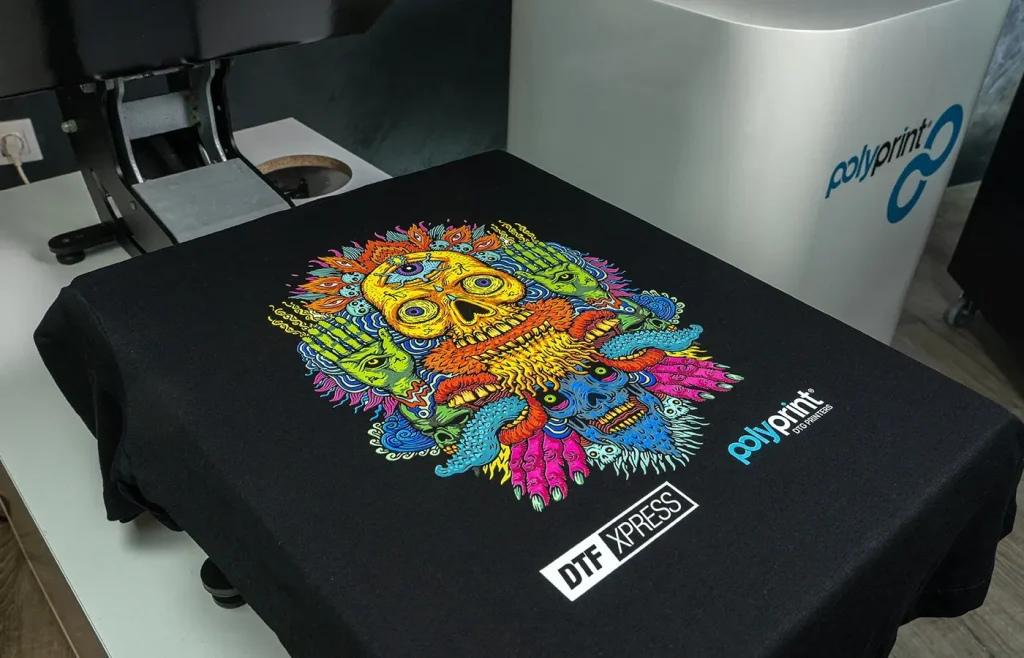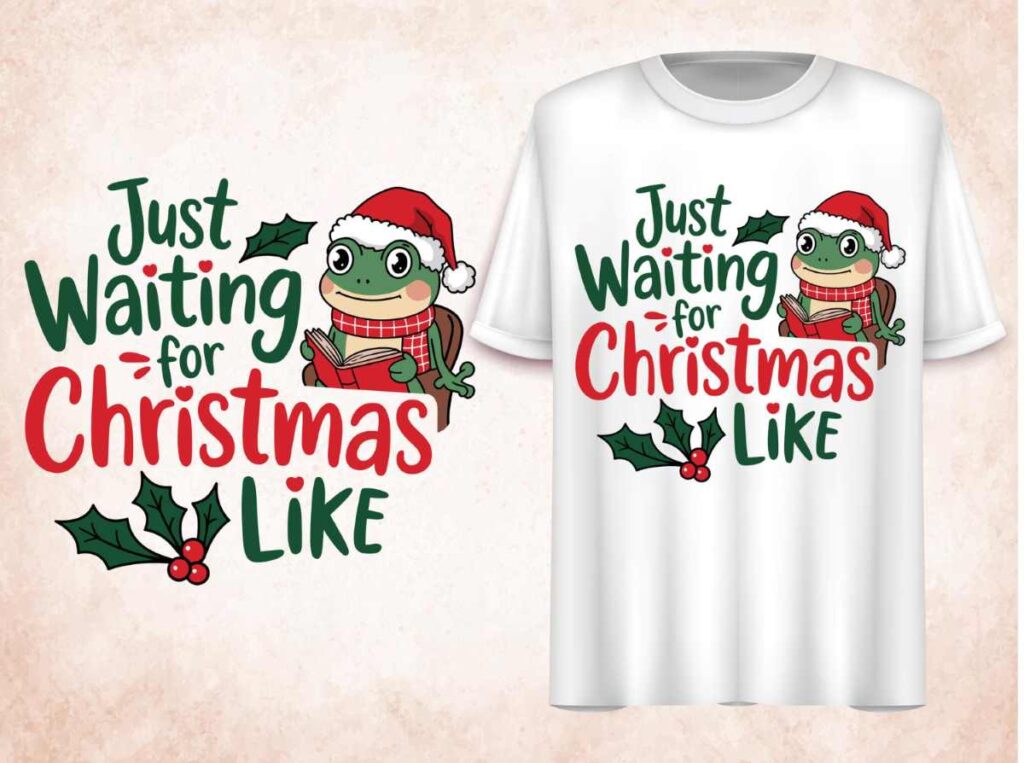DTF printing, or Direct to Film printing, is rapidly changing the landscape of textile printing technology, marking a notable evolution in how we produce and personalize fabrics. This innovative method allows for exceptionally vibrant and detailed custom textile designs, transforming the apparel and home décor markets. Thanks to advancements in digital printing textiles, businesses can now realize quicker turnaround times and reduced production costs while maintaining high-quality outputs. Moreover, the sustainable fabric printing features of DTF printing, primarily using water-based inks, align perfectly with the growing consumer demand for eco-friendly products. In this deep dive, we’ll explore how DTF printing is not just a trend, but a revolutionary force set to redefine the future of the textile industry.
The textile printing sector is experiencing a technological revolution, spearheaded by cutting-edge processes that enhance fabric customization and production efficiency. One such process that has gained remarkable popularity is Direct to Film (DTF) printing, which streamlines the transfer of designs directly onto fabrics. This modern approach not only allows for precise detail in digital fabric prints but also meets the increasing demand for sustainable solutions in manufacturing. By utilizing innovative printing techniques, companies can create unique textile designs that cater to individual tastes while remaining environmentally conscious. As industry trends evolve, exploring the potential of DTF and similar technologies becomes essential for businesses aiming to thrive in a competitive marketplace.
The Transformative Power of Direct to Film Printing
Direct to Film (DTF) printing is redefining the landscape of textile printing technology by offering an unmatched blend of versatility, quality, and cost-effectiveness. This innovative process involves printing images onto a special film that can then be transferred onto various fabric types, opening up endless possibilities for custom textile designs. Unlike traditional methods that may limit design capabilities due to fabric constraints, DTF has no such restrictions, enabling brands to experiment with different materials and create unique, eye-catching products. This transformation not only enhances the creative potential of fashion designers and manufacturers but also allows them to diversify their offerings, catering to a broader customer base.
Moreover, the increasing demand for sustainable fabric printing practices has made DTF a frontrunner in eco-friendly textile solutions. With water-based inks that minimize environmental impact, DTF printing aligns perfectly with the values of modern consumers who are increasingly seeking to support sustainable brands. This commitment to sustainability never compromises on quality; in fact, many brands are discovering that the high-resolution outputs and vibrant color ranges achievable with DTF often surpass those of conventional printing methods. Thus, DTF printing is not merely a trend; it is a substantial shift in how textiles are produced and consumed.
Exploring the Benefits of DTF Printing
One of the standout advantages of Direct to Film (DTF) printing is its exceptional adaptability to various fabric types, including cotton, polyester, and blends. This flexibility is crucial for businesses aiming to capture diverse markets, from trendy apparel to decorative home textiles. Companies can now produce high-quality prints on both light and dark fabrics, which was often a challenge in traditional printing. This versatility enables greater product customization, allowing companies to offer unique designs that meet specific client needs and advancing their position in an increasingly competitive market.
In addition to its compatibility with multiple materials, DTF printing boasts rapid production capabilities. Businesses can quickly respond to market trends or customer requests, which is essential in an industry where timing can make or break a product’s success. The efficiency of DTF means that short production runs are not just feasible; they are cost-effective. This aspect is particularly appealing to small businesses or start-ups that may not have the resources to commit to large production lots but still wish to provide unique, custom designs that resonate with their target markets.
DTF Printing: A Sustainable Choice
Sustainability in textile production is more important than ever, and DTF printing rises to the occasion by minimizing environmental impact. With the use of water-based inks, this technology significantly reduces harmful emissions associated with traditional dyeing and printing methods. As consumers increasingly prefer brands that demonstrate a commitment to eco-friendliness, adopting DTF printing can help businesses build a more sustainable reputation. Furthermore, the reduced waste generated during production aligns with sustainability goals, leading to a more responsible approach in the textile industry.
Additionally, the lifecycle of custom textile designs created with DTF printing tends to reflect customers’ growing eco-conscious preferences. The durability of DTF prints ensures that garments can withstand repeated washing without significant fade or damage, further extending the life of each product. This longevity reduces the need for frequent replacements, effectively lowering consumption rates and waste. As brands embrace sustainable practices, DTF printing becomes a pivotal player in promoting a healthier planet while keeping businesses competitive in a saturated market.
The Technological Evolution of DTF Printing
Recent advancements in DTF printing technology showcase how innovation continues to propel the textile industry forward. Developments in machinery and ink formulations have significantly improved the quality of DTF prints, ensuring better adhesion and color stability. Hybrid machines that combine DTF with other printing processes are emerging, allowing for even greater creativity in design and manufacturing. These technological strides not only enhance the capabilities of textile businesses but also pave the way for new artistic expressions, enabling designers to push boundaries.
Furthermore, as technology evolves, the learning curve associated with DTF printing has become more accessible. User-friendly software and machinery are streamlining the printing process, making it easier for businesses of all sizes to adopt this innovative approach. This democratization of technology fosters creativity and encourages small businesses and independent creators to enter the market with customized designs. As DTF printing becomes more ubiquitous, the potential for emerging trends and styles is boundless, ensuring the industry remains dynamic and engaging.
Challenges and Considerations in DTF Printing
While the benefits of DTF printing are substantial, there are challenges that businesses need to consider during implementation. One significant concern is the initial investment required for DTF equipment, which can be a barrier for smaller companies. The cost of high-quality printers, films, and inks, alongside training staff to operate the machinery effectively, can be daunting. These factors necessitate careful planning and budgeting to ensure that the advantages of DTF printing outweigh the upfront expenses.
Moreover, fabric compatibility remains a challenge, as not all materials may respond well to DTF processes. Comprehensive product testing is essential to determine which fabrics yield the best results, and companies must be prepared to adapt their offerings accordingly. Balancing quality with efficiency is paramount for businesses looking to leverage DTF printing. Ensuring that products meet high standards while maintaining quick turnaround times will be crucial for staying competitive in a fast-evolving marketplace.
The Future of DTF Printing in the Textile Industry
The future of Direct to Film (DTF) printing in the textile industry looks incredibly promising, driven by continuous advancements in technology and growing consumer demand for unique, customized products. As brands embrace DTF printing, they can carve out distinct market niches, offering personalized designs that resonate with individual consumer preferences. This focus on individuality aligns with the broader trends in fashion and retail, where consumers increasingly seek out products that reflect their identity, thus positioning DTF as a key player in this evolving landscape.
Additionally, as sustainability becomes a non-negotiable component of textile production, DTF printing’s eco-friendly practices will likely gain further traction. Consumers are becoming more aware of the environmental impacts of their purchases and are gravitating towards brands that prioritize sustainability. Companies that adopt DTF printing can leverage this trend, not only enhancing their product offerings but also fostering deeper connections with their audience. As technological innovations continue to unfold, DTF printing may very well set the standard for the future of textile production, merging creativity with conscientiousness.
Frequently Asked Questions
What is DTF printing and how does it work?
DTF printing, or Direct to Film printing, is a textile printing technology that allows vibrant designs to be printed onto a special film using advanced digital inkjet technology. After printing, the design is transferred onto fabric using heat and pressure, enabling compatibility with various materials like cotton and polyester.
What are the benefits of using DTF printing in textile production?
DTF printing offers several benefits, including high-quality outputs with vibrant colors, compatibility with various fabrics, cost-effective production for small batch runs, sustainability through the use of water-based inks, rapid production times, and endless customization possibilities, catering to modern consumer demands.
Is DTF printing a more sustainable option compared to traditional methods?
Yes, DTF printing promotes sustainable fabric printing by using water-based inks, which reduce harmful emissions and waste compared to traditional printing methods. This makes DTF an environmentally friendly choice for businesses aiming to adopt greener practices.
How does DTF printing compare to other digital textile printing methods?
DTF printing shines in situations requiring high-quality, detailed prints on a variety of fabrics while maintaining cost efficiency, especially for small runs. Unlike other digital printing textiles methods, DTF is particularly versatile and allows greater customization, making it ideal for modern fashion needs.
What types of fabrics can be used with DTF printing?
DTF printing is compatible with a wide range of fabrics, including natural fibers like cotton, synthetic materials like polyester, and blended textiles. This versatility allows for broad applications in the fashion and home textile sectors.
Are there any challenges associated with implementing DTF printing technology?
While DTF printing offers numerous advantages, challenges include the initial investment in equipment and training for employees, as well as the need for product testing to ensure fabric compatibility and quality. Businesses must weigh these factors to effectively incorporate DTF into their production.
| Key Points | Details |
|---|---|
| Compatibility with Various Fabrics | Allows printing on cotton, polyester, and blends to cater to diverse markets. |
| High-Quality Outputs | Offers vibrant colors and intricate details, rivaling traditional methods. |
| Cost-Effective Production | Reduces setup costs and material waste, especially for small batches. |
| Sustainability Aspect | Water-based inks reduce emissions, appealing to eco-conscious consumers. |
| Rapid Production Times | Enables quick responses to market trends and customer demands. |
| Endless Customization Possibilities | Facilitates personalized products, meeting consumer demands for uniqueness. |
Summary
DTF printing is revolutionizing the textile industry through innovation, flexibility, and sustainability. This advanced printing technology not only offers compatibility with a wide range of fabrics but also delivers high-quality, vibrant prints that can be produced at lower costs. As businesses strive for agility and customer personalization, DTF printing stands as a beacon of opportunity, allowing companies to remain competitive while addressing the growing demand for eco-friendly practices. By leveraging the advantages of DTF, brands can enhance their product offerings and carve out a unique identity in the bustling world of textiles.



